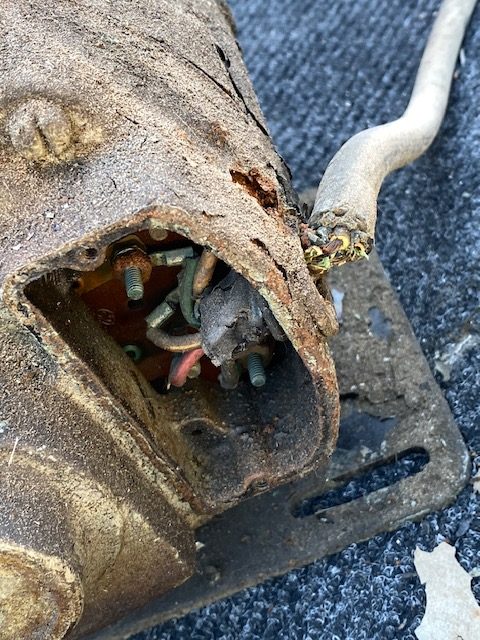
As much as I enjoy concrete work I need to take a break now and then. I ran out of mud for the back patio (164 bags, missed it by 10 bags!) so I decided to get my old South Bend 6’ lathe up and running.
My Pop bought the South Bend way back in the late 1960’s. I was just a kid but I remember riding in Pop’s Chevy ¾ ton, picking up the machine and unloading it at our house. It was and still is the heaviest thing I ever want to move. We were lucky in that the South Bend came with a crap load of attachments: a full set of collets, three steady rests, a 3-jaw and 4-jaw chuck and hundreds of tool bits were thrown in with the lathe.

Pops gave me the lathe 14 years ago. He said he was never going to use it again and he needed more room. I took the lathe down to The Florida Keys, where we lived at the time, and it went under water several times due to hurricanes. The motor was mounted lower on the lathe frame so it was lost to the elements. The rest of the lathe sat higher and was ok. All I did in The Keys was work so the South Bend sat for many years and I dragged it out to New Mexico in The Big Haul Ryder truck.

With the Covid, stay-at-home orders I decided now is the time to get the old machine running again. Back when we first got the lathe I asked my dad, “What does it do?” He told me “Everything”. He said, “You can make another lathe with a lathe!” Pops was a good machinist and he showed me the basics of operation. I was cutting threads on the South Bend within a few weeks.

The South Bend came with a hokey, home-made motor/pulley setup that we were going to change 50 years ago but never got around to it. The pulley set up is ugly but it works and that’s probably why it stayed. This go-round I’m leaving it as is. The next guy can come up with a better system. Because with lathes there is always a next guy: they don’t wear out.

The old motor had a wider mounting bolt footprint and one hole of the 4 mounting holes was used for an adjuster bolt. I re-drilled the plate to suit the new motor and tapped the holes for 5/16” bolts.

For the adjusting bolt I used the existing motor mount holes but made a bar to go underneath. The new bar extends past the motor plate to line up with the adjuster bolt. It looks a little better than the previous setup. I need a few parts to finish the new motor installation so that will have to wait.

The South Bend is a 6” lathe but at some point in the past it was jacked up to an 8” lathe (swing over V-ways). The 1” spacer blocks look so well made they may be factory parts. I’m leaving them.

One of the nice things about this lathe is that it has not been abused. The thing is probably 70 years old and V-ways are smooth and unscarred from work falling out of the chuck and smacking into them. This means that a good machinist ran the thing.

That is, it was unscarred until I got my teen-age meat hooks on it. That gouge in the carriage was put there in the early 1970s by yours truly. I was cutting threads on a shaft, or maybe it was a taper, and the carriage self-fed into the chuck making a loud banging sound. I was confused; Pops was not happy and reamed me out. I never ran the carriage into the chuck again.

The forward/reverse switch is shot so I am replacing it with a toggle. Only because I have a 4-pole, double throw, center off toggle in stock. I’ve wanted to use that oddball switch forever. I’m also relocating the switch and wiring the motor 240-volt so that the 6000-watt solar-powered inverter can start the motor easier. With the old set up you had to reach over and between the spinning belts and pulleys to access the switch. It was sure a thing to keep you on your toes. Front mounting the switch will be mildly safer.
A lathe is one of the handiest machine tools you can own. The old ones are slightly clunkier to operate and I’ve forgotten most of what I knew about operating one. I’m sure YouTube is full of how-to lathe videos so I’ll brush up before I start making scrap metal.
While I wait for parts I’ll start cleaning the beast. Part 2 will cover the motor mounting, belts and wiring.
Never miss an ExNotes blog: Sign up here for new blog notifications:
